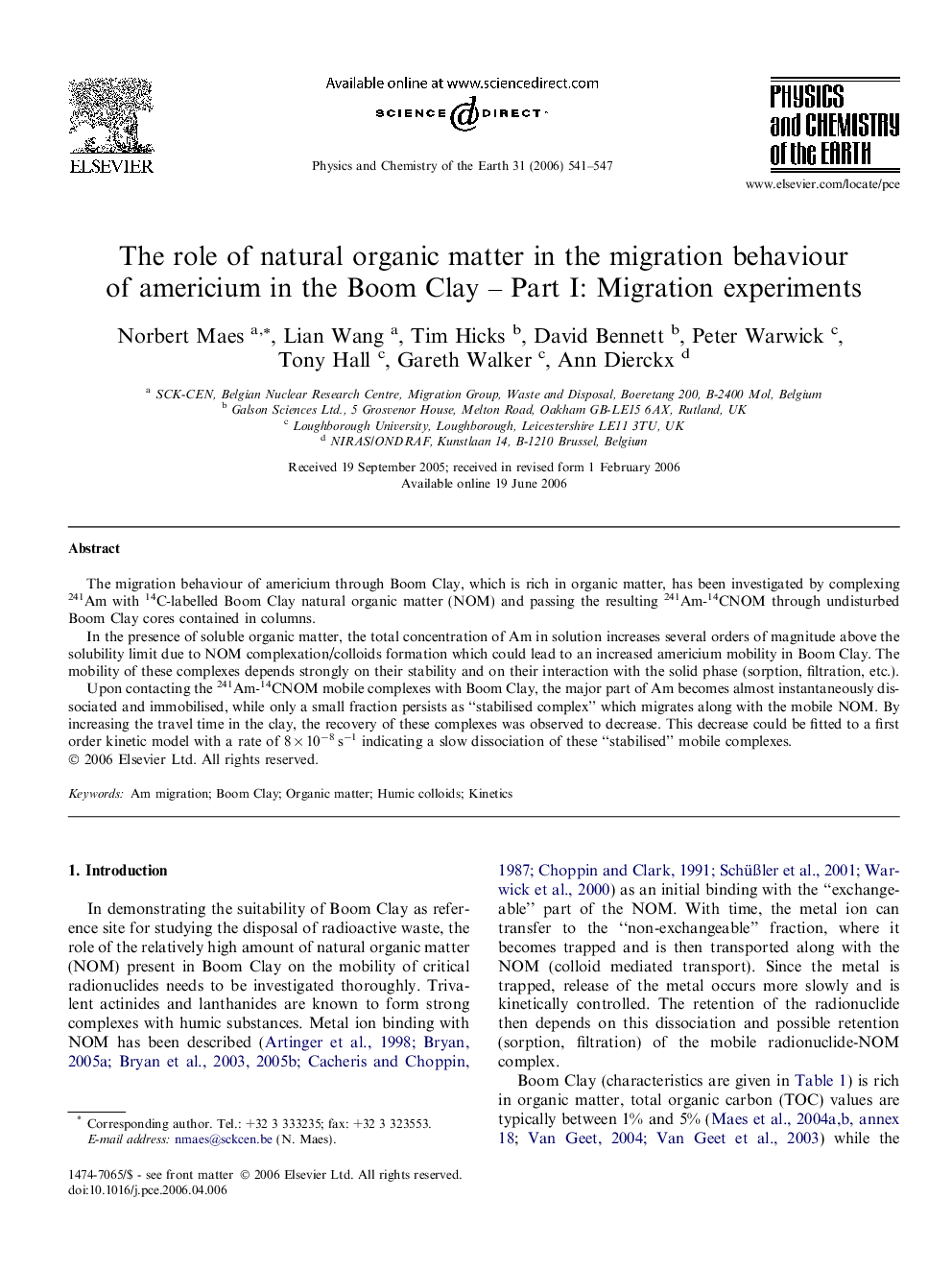| Article ID | Journal | Published Year | Pages | File Type |
|---|---|---|---|---|
| 4722085 | Physics and Chemistry of the Earth, Parts A/B/C | 2006 | 7 Pages |
The migration behaviour of americium through Boom Clay, which is rich in organic matter, has been investigated by complexing 241Am with 14C-labelled Boom Clay natural organic matter (NOM) and passing the resulting 241Am-14CNOM through undisturbed Boom Clay cores contained in columns.In the presence of soluble organic matter, the total concentration of Am in solution increases several orders of magnitude above the solubility limit due to NOM complexation/colloids formation which could lead to an increased americium mobility in Boom Clay. The mobility of these complexes depends strongly on their stability and on their interaction with the solid phase (sorption, filtration, etc.).Upon contacting the 241Am-14CNOM mobile complexes with Boom Clay, the major part of Am becomes almost instantaneously dissociated and immobilised, while only a small fraction persists as “stabilised complex” which migrates along with the mobile NOM. By increasing the travel time in the clay, the recovery of these complexes was observed to decrease. This decrease could be fitted to a first order kinetic model with a rate of 8 × 10−8 s−1 indicating a slow dissociation of these “stabilised” mobile complexes.
